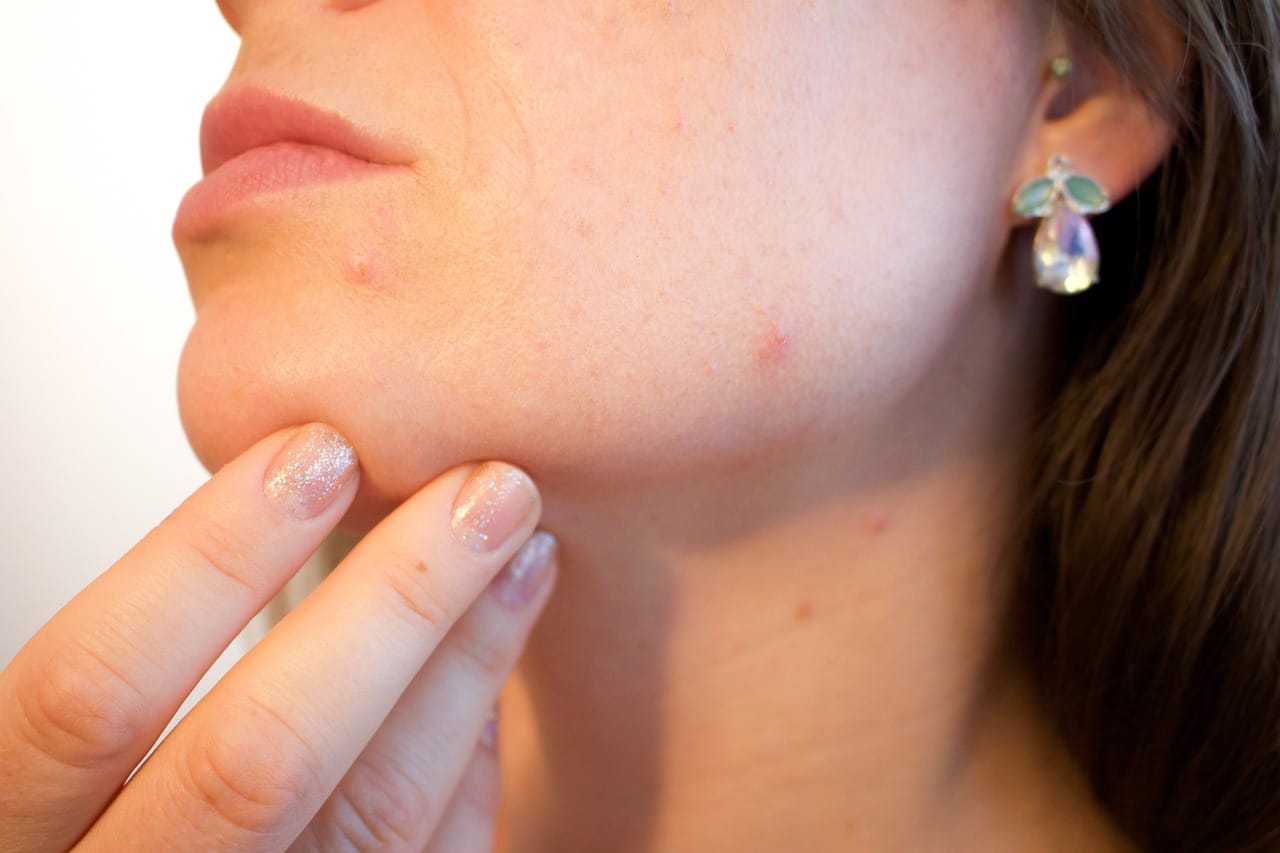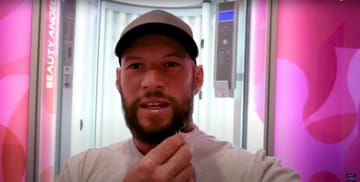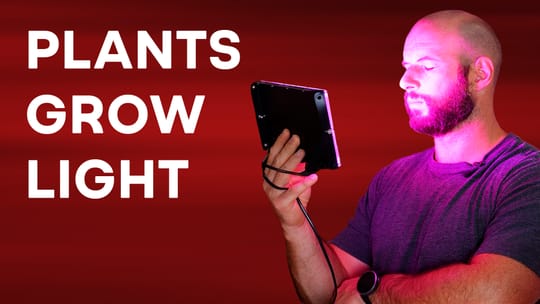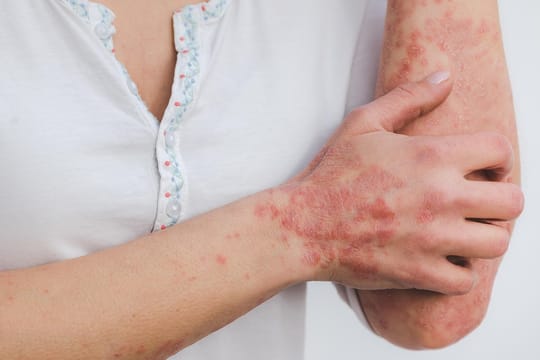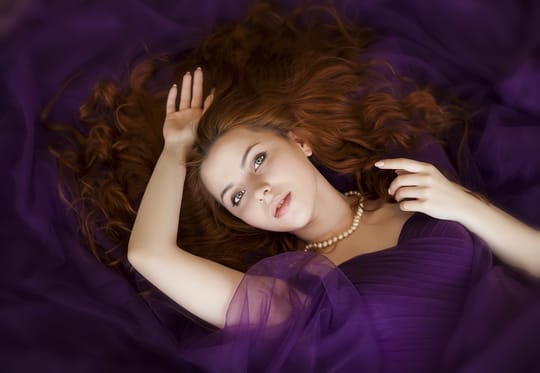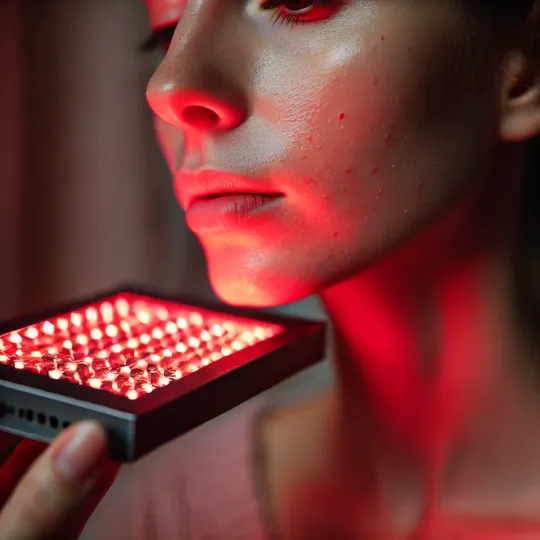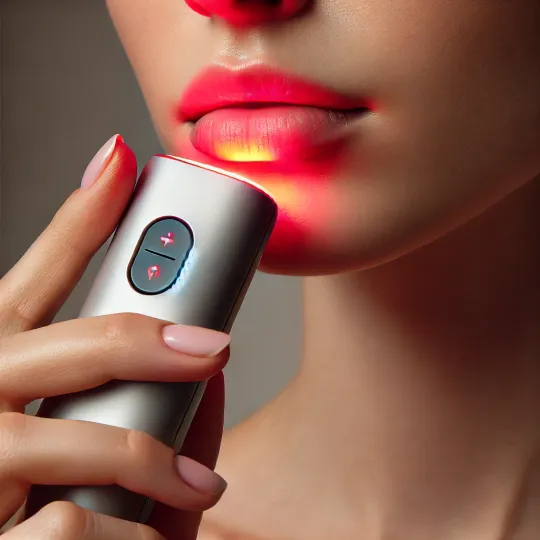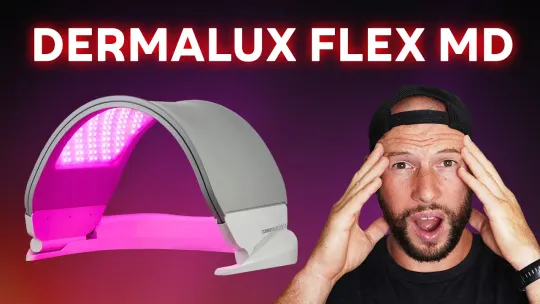In this blog post, I'll talk about red light therapy for scars. Scars can be extremely different from each other, such as red light therapy for acne scars or red light therapy for old scars.
One important caveat here is that I don't recommend treatment without first seeing a medical professional in many casses. Examples here are red light therapy post-surgery or red light therapy scar removal strategies. Consult with your physician first on these topics!
Nevertheless, whatever the type of scar you're thinking about, I'll explore the science on these topics in much more detail below:
What Are Scars And Why Do They Matter?
First up, a very short introduction into scars. Scars can originate because of many different reasons, such as acne and other skin conditions, surgery, fast tissue growth, mishaps, and so forth (1; 2; 3; 4; 5; 6; 7).
And, scars don't just affect the appearance of tissues but also your psychology and potentially quality of life. Many factors influence that outcome though, such as the scar's color and its location. If you've got recent scars, they can also cause inconveniences such as pain, burning, itching, and more. Overall, scars can affect your career, your sexual life, your confidence in social life, and other domains.
So, ideally, you'd have an easy fix for scar tissue so that it disappears. But, scars are part of a healing mechanism in the body after wound repair. The eventual scar is more fibrous and there. Many different treatments exist for scars, such as gels, injections, lasers, surgery, steroids, and more. All of these treatments are imperfect though.
Hence, let's explore other topions:
Can Red Light Therapy Help With Scar Healing?
So, let's explore the simple question: "Can red light therapy help with scar healing?" I'll explore the science on this topic (8; 9; 10; 11; 12; 13; 14; 15; 16). I'll narrate the outcome of these studies as the studies aren't uniform.
Over time though, many studies show that red light therapy with scar healing helps significantly. Treatments usually last over the course of several months, for the best results. And, good results are found for different types of scars, such as burning scars on children, a thyroidectomy surgery in the neck,
This outcome is a decently reliable and valid scale for measuring the presence of scars, the "Vancouver Scar Scale" (VSS). In many studies, the VSS score improves for people over time compared to when a placebo is used.
Also, red light therapy for scars seems to be safe, without side effects. However, in most studies, the light is applied in the earlier stages of the healing process, such as after a surgery - not years after a scar has already formed.
Pain, if present, also generally improves. Nevertheless, in some studies, just a single sessions already brings improvements (14). That effect is measureable many weeks after the intial single red light therapy session.
Nevertheless, the results that can be achieved over time are spectecular in some cases. One study used the aforementioned VVS as an outcome measure:
"Nineteen patients with 19 burn scars were treated with a 400 mW 670 nm Softlaser twice a week over 8 weeks. In each patient a control area was defined, that was not irradiated. Parameters assessed were the Vancouver Scar Scale (VSS) for macroscopic evaluation and the Visual Analogue Scale (VAS) for pruritus and pain. Photographical and clinical assessments were recorded in all the patients. Seventeen out of 19 scars exhibited an improvement after treatment. The average rating on the VSS decreased from 7.10+/-2.13 to 4.68+/-2.05 points in the treated areas, whereas the VSS in the control areas decreased from 6.10+/-2.86 to 5.88+/-2.72. A correlation between scar duration and improvement through LLLT could be found." (9).
The "Vancouver Scar Scale" (VSS) has scores of between 0 and 13, with 13 being more problematic scars. The VVS measures the vascularity, pigmentation, pliability and height of the scars.
Over a period of eight weeks, burn scars improved by more than two points on the VSS.
You may, however, think the following:
How Is Red Light Therapy Good For Scars?
So how exactly is red light therapy good for scars? Many different biological mechanisms exist. A recent review article on red light therapy and the skin explains these mechanisms as follows - I'll break the scientific jargon down into easier language later on:
"Although skin is naturally exposed to light more than any other organ, it still responds well to red and near-infrared wavelengths. The photons are absorbed by mitochondrial chromophores in skin cells. Consequently, electron transport, adenosine triphosphate nitric oxide release, blood flow, reactive oxygen species increase, and diverse signaling pathways are activated. Stem cells can be activated, allowing increased tissue repair and healing. In dermatology, LLLT has beneficial effects on wrinkles, acne scars, hypertrophic scars, and healing of burns. LLLT can reduce UV damage both as a treatment and as a prophylactic measure. In pigmentary disorders such as vitiligo, LLLT can increase pigmentation by stimulating melanocyte proliferation and reduce depigmentation by inhibiting autoimmunity. Inflammatory diseases such as psoriasis and acne can also be managed. The noninvasive nature and almost complete absence of side effects encourage further testing in dermatology." (10)
LLLT stands for "Low Level Laser Therapy", the name used for red light therapy when lasers were mostly used--not LEDs. The mitochondria, the energy-producing factories in your cells, create more energy as a result of red and near infrared light exposure.
As a result, health is supported in the skin and the healing process speeds up. Red light therapy can also increase blood flow and help stem cells (cells that can differentiate into more specific roles) do their job better. Through these mechanisms, red light therapy counters wrinkles and counters different types of scars. And, you can use red light therapy for skin anti-aging.
So overall, red light therapy for scar tissue is really promising right now, although rmoe research is needed. Let's now explore the topic of red light therapy for skin conditions in more detail:
Red Light Therapy On Skin Conditions: Why Does it Work?
Red light therapy has significant effects on many different skin conditions (17; 18; 19; 20; 21; 22; 23; 24; 25; 26). Examples here are atopic dermatitis, acne, psoriasis, and others. Other cases such as wound healing, or skin conditions as a side effect of type two diabetes are also affected.
Evidence isn't always the strongest though, as it varies from condition to condition. And, even for the signs of aging and skin beauty, tons of different effects are found that I won't go into fully here. If you want to see the results, consider the Omnilux experiment that Alex Fergus tried, for instance, in relation to skin beauty and collagen density:
Curious what happens if you use a red light therapy mask on half of your face for 5 weeks? The outcome is very surprising!
Next up, let's look at some specific cases:
Red Light Therapy And Skin (Health) Prevention And Support
Next up, let's look at some specific cases where red light therapy for the skin can help prevent issues and support health:
Red Light Therapy For Acne
So let's look at red light therapy for acne first (27; 28; 29; 30; 31; 32). First up, red light therapy may not necessarily outperform traditional treatments such as pharmaceuticals (31). But, the benefit is that it's mostly side effect-free, unless you don't follow the instructions of the device that you're using.
Nevertheless, both red light and blue light therapy can have significant effects on acne. For instance, a recent study had the following outcome:
"At the 2-week follow-up, the average improvement rate of total acne lesions was 36.2% in the [red light] group and 30.7% in the [blue light] group (p > .05)." (32).
A decrease of more than a third in the number of acne lesions after just two weeks of treatment is a wonderful outcome for many. And, arguably, the combination of blue and red light may give far superior results as both work through very different biological mechanisms.
If you're interested in red light therapy for acne, with a product that combines red and blue light, check out the PlatinumLED BioMax 300 for your face, for instance:
The PlatinumLED BioMax 300 has blue LEDs that counter acne in the skin. And, there are five different wavelengths of red and near infrared, for arguably a great anti-acne product!
Both red and blue light seem to work especially well for inflammatory lesions of acne. In some studies, the combination of prescription medicine with red light therapy leads to arguably better results, but those pharmaceuticals aren't side effect free (27).
Other studies show that very infrequent treatment with a high power output of 80n mW/cm2 can work really well (28). Treatment happened only once every two weeks for six sessions in total. Sebum excretion in the skin because of acne decreased as well as inflammatory and non-inflammatory lesions.
If you have to choose between red and near infrared light, then red light is probably best for acne. Still, I'd opt for both if possible.
Red and blue light therapy for acne scars prevention is a no-brainer. If you prevent the acne from forming in the first place, yoiu can also not scratch the acne lesions and have them transition into scar tissue. Also, existing scars may look better with light treatment.
Next up:
Red Light Therapy For Keloid Scars
Excess so-called "fibroblasts" presence cause keloid scars. So let's explore the topic of red light therapy for keloid scars (33; 34; 35; 36; 37). Keloid scars are an abnormal, protruding red scar tissue that forms after an injury.
Some genetic backgrounds increase your risk of getting keloid scars. You can have a burn, for instance, or a surgical wound that later develops into a keloid scar. The easiest way to understand these scars is that they're an overgrowth of collagen - so the reformation of collagen in the skin works too well.
There's not a ton of research on red light therapy for keloid scars but current research is promising, especially for prevention.
For instance, if near infrared light is applied after a hernia surgery in the stomach, it prevents keloids from developing (33). In this way, red light therapy post surgery is really helpful. A lot more research is needed in this area though, as most studies have very different setups (34). For that reason, definitive benefits cannot be claimed yet.
Red Light Therapy Post-Surgery
Red light therapy post-surgery is extremely promising. Both animal and human studies show extremely good effects on wound healing (38; 39; 40; 41; 42; 43). Once more though, consult with your physician first before asking "can you use red light therapy on a scar" or for scar prevention.
Especially after surgery, follow your doctors' recommendations as you can do more harm than good!
Nevertheless, the outcome is promising, especially when treated just after surgery. A recent study states that:
"Within six months following surgery, significantly improved quality of the scars on the treated side compared with the untreated side was reported by patients and experienced professionals according to Vancouver Scar Scale" (38)
So once more, the VSS scale, use for more objective asssessment, showed improvements with red light therapy. Another study states that:
"Photobiomodulation (PBM) [a.k.a. red light therapy] is an efficient and safe therapeutic modality for post-burn hypertrophic scars in children, with no side effects, and should be considered a part of combination therapy for better results." (42).
And one more study on c-sections in women concluded the following:
"This study reports a clinical examination of PBM under intervention group of 40 patients ranging 18-40 years old with body mass index (BMI) of 29-36, during post-cesarean surgery to elucidate successful healing of the wounds and scars against conventional methods which considered as control group" (43).
So in a wide range of cases, red light therapy after surgery seems to have beneficial effects on wound healing and scar formation!
Red Light Therapy For Wrinkles
Overall, the red light therapy for wrinkles market is getting huge. Tons of different devices exist to counter wrinkles and many new positive publications appear on this topic every single year.
I won't go into too much detail on red light therapy for wrinkles in this blog post. But suffice it to say, red light therapy can increase collagen and elastin in the skin, remove dark circles around the eyes, enhance firmness, and reduce redness in the skin.
So, for wrinkles, red light therapy really is an all-round solution. Below you'll find some of the best red light therapy for wrinkles devices reviewed:
The Jovs 4d is a laser mask that has been specifically engineered to maximize beauty! It looks weird but it's one of the best masks out there.
Next up, if you don't want a mask, you could also try the Dermalux Flex MD:
The Dermalux Flex MD has been engineered with beauty in mind and also emits blue light, in addition to red and near infrared
And, lastly, there's a tabletop panel that you might want to consider - that's generally the most economic option for many:
Want a beauty panel? These tabletops will do the job very well!!
All of these options are really great if you want to use red light therapy for wrinkles.
How Does Low Laser Therapy Differ From Red Light Therapy?
"Low Level Laser Therapy" is how red light therapy originally started. Back in the 1970s and 80s, "low level" lasers that were non-heating were distinguished from other heat producing lasers. Such heat producing lasers are used in surgery, for instance, for cutting through tissues.
The Low Level Laser Therapy (LLLT) name became more problematic when in the 1990s and 2000s, the price of LEDs came down. Generally, LEDs are now considered equally effective as lasers, as well as being more cost-effective (44; 45; 46).
That use of LEDs eventually evolved into "red light therapy". The scientific term is still "photobiomodulation" right now, although, on the internet and in layman's terms, "red light therapy" is the more common denominator.
Moving on:
How To Treat Scars And Wounds At Home With Red Light Therapy?
The first question in this case is "Where is the tissue located". Wounds and scars are superficial tissues, located directly on the skin. For that reason, you'll want a dosing protocol that's optimal for superfical tissues, not for deeper tissues like bone or muscles.
Also, in the literature I've cited above, I've seen a wide array of different wavelengths work. Both red and near infrared light seem to have beneficial effects, as does blue light in some cases such as acne.
(If you want more info on different wavelengths for skin health, check the video below)
In this video, Alex Fergus explains the best wavelengths for skin health and beauty
Overall, though, I recommend checking the best red light therapy panel for beauty video that I posted before. If you'd like to treat your entire body with a panel, just take a bigger version of the winner of that video.
Here are the top-3 beauty panels:
- PlatinumLED BioMax 300: - no discount code available, use the link for a discount! Check Alex's updated review of the BioMax 900 from 2024 as well.
- Mito Red MitoPRO 300 - discount code ALEX5 saves. You can also try the MitoPRO X series, which contains yellow light therapy!
- Rojo 300 - discount code ALEX saves. Rojo have a new panel too now, the Refine series, which arguably is even better.
The PlatinumLED BioMax is the winner here because it also emits blue light, which has additional beauty benefits!
Please keep in mind that this video was shot in 2023, so it doesn't have take the newer panels into account. For the best beauty product, I'd probably recommend watching Alex's comparison series of red light therapy panels and selecting a panel that emits yellow or blue light for additional beauty benefits!
Next up, let's consider what other people think about this topic:
Let the People And Numbers Speak for Themselves: Science and Testimonials
So how about red light therapy for surgical scars before and after or red light therapy for scars before and after?
I found some testimonials on this topic, from people using red light therapy for acne scars for instance. These people write:
"How close to the light was your face? I lay directly under the blue light for 15 mins, and then another 15 mins under the red light, so it's pretty intense. Last time, the esthetician also tried out the LightTouch on my face, and I must say I noticed that my skin texture looked better afterwards. I usually see improvement in my skin for about 1-2 weeks after, so I must be doing something right. I also get high frequency after each facial - it really helps with several things (inflammation, infection, acne) and stimulates blood circulation to the face. I've been doing this for years, since I was a teenager, and it always helps." (47).
Not all testimonials are positive though! Some testimonials report big changes in people's lives though, such as this one:
"The esthetician recommended LED therapy for my scarring, I tried it, and it was crazy. I saw results super fast, and it really minimized the awful redness and scarring in just the 10-minute session. I stupidly forgot to take before pictures, but it was a dramatic difference that even my family noticed. For info, I have very very pale skin, and the esthetician used a combo of LED (she didn't say the color) and red light therapy. However, the sessions are crazy expensive. Is it worth it to get an at-home machine? Has anyone had success with a specific model? Grateful for any feedback, thank you!!" (48).
And, the answer is, sure, a high quality device should give you similar results as what you get in a clinic. And, one last testimonial:
"Red light therapy reduced my stretch marks significantly on my stomach after my second baby! You can’t even see my stretch marks now, so I imagine it would work the same for scarring since it’s pretty much the same thing. The only downside is the cost, I paid over $2,000 for a couple months of treatment" (49).
So, yes, many people have been getting very good results with red light therapy for scars.
And, for the general science on this topic, just check the recommendations that I've left above.
Conclusion: Red Light Therapy For Treating Scars and Wounds Is Science-Backed
Red light therapy for scars is extremely promising as a treatment, especially if you're early. Later on, however, you can still get great benefits although the results will be lesser.
Although the treatment varies for different types of scars, I recommend combining blue light, red light, and near infrared light for the best results. Check out this video, for intstance, on the best red light therapy beauty panel if you'd like to learn more.
Red Light Therapy For Scars Frequently Asked Questions (FAQs)
Lastly, let's consider a few red light therapy for scars frequently asked questions:
Does Red Light Therapy Work For Old Surgery Scars?
For the best results, I recommend using red light therapy immediately after you potentially get a scar, so, during the healing process of a wound. In the long run, however, red light therapy may improve the appearance of old surgery scars as well although the results will be far less prominent than with early treatment.
Is Yellow Light Better For Scars Than Red Light Therapy?
Yellow light (which is located around 580-600nm) can be helpful. Yellow light can help in relation to pigmentation, collagen, redness, and swelling (44; 45; 46). Both are good and have their own unique benefits.
But, there's a lot more research available on red light therapy for scars and skin health compared to yellow light. Yellow light needs to be studied in much more depth before strong conclusions can be made about it for scars.
Does Red Light Therapy Break Down Scar Tissues?
Red light therapy doesn't break down scar tissues but improves their appearance. Lasers can break down scar tissue, however, but it's a specialized treatment for which you'll need a medical professional (47; 48; 49; 50; 51; 52).
Once more though, you'll preferably want an early treatment with lasers when a scar is potentially forming. This is true for surgical scars, hypertrophy scars, keloids, and striae.
Is Red Light Therapy Good For Spider Veins?
Varicose veins and "spider veins", which are interrelated, appear mostly on the legs. Poor circulation is a main reason why these develop. Blood's necessity to move against gravity is the main reason these veins develop in the legs.
Red light therapy can theoretically help really well against spider veins and varicose veins because it boosts blood circulation significantly. Red light therapy also improves oxygenation, lowers inflammation, helps create new blood vessels (angiogenesis), and has other mechanisms of countering spider veins. More direct research is needed in this area, but theoretically, the results should be there!
Is Red Light Therapy Good For Psoriasis?
This is a post by Bart Wolbers of Lighttherapyinsiders. Bart finished degrees in Physical Therapy (B), Philosophy (BA and MA), Philosophy of Science and Technology (MS - with distinction), and Clinical Health Science (MS), has had training in functional medicine, and is currently chief science writer.
Found This Interesting? Then You Might Like:
- Start Here - Light Therapy 101 & Buyers Guide
- Discount Codes, Deals & Recommendations - Red Light Therapy
- How To Use Red Light Therapy At Home: Expert Tips
- 36 Powerful Red Light Therapy Benefits
- Red Light Therapy Wavelengths Benefits: The Ultimate Guide
- Red Light Therapy For Weight Loss: The Science Of Supercharging Fat Loss

